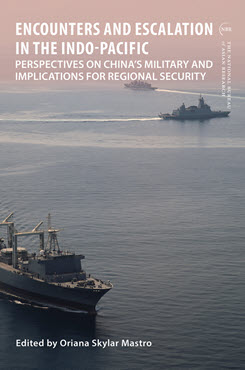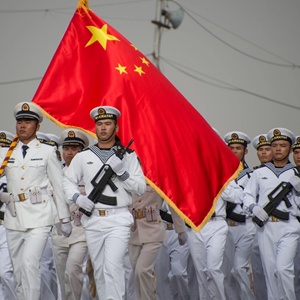Essay in NBR Special Report 108
Close Encounters with the PLA
Regional Experiences and Implications for Deterrence
This report examines how the assertiveness of the People’s Liberation Army (PLA) has escalated tensions in the Indo-Pacific, leading to dangerous encounters with key regional players, and evaluates how China’s actions have influenced countries’ strategic planning and deterrence postures.
UPCOMING EVENT
A public event on June 6, 2024, will draw upon this report, featuring leading security experts from the region. Learn more and register.
EXECUTIVE SUMMARY
MAIN ARGUMENT
The significant transformation of the PLA due to Chinese military modernization efforts over the past 25 years has led to a shift in the strategic environment of the Indo-Pacific region. With a 790% increase in defense spending from 1992 to 2020, the PLA has become one of the world’s most advanced militaries. Such military modernization, coupled with increasingly assertive behavior, has led to more frequent and dangerous encounters between the PLA and the militaries of countries across the Indo-Pacific. These interactions have heightened tensions, with specific incidents emphasizing the risk of miscalculations that could escalate into major conflicts. Through case studies on Australia, India, Japan, the Philippines, Taiwan, and Vietnam, this report aims to understand the PLA’s strategic calculus on escalation, assessing the potential for conflict in the region and exploring shared threat perceptions, regional responses, and implications for deterrence.
POLICY IMPLICATIONS
- To effectively counter Chinese aggression, it is crucial that policy approaches are both clear and consistent, along with a robust active deterrence strategy across different administrations.
- Expanding security cooperation with other nations and strengthening partnerships with the U.S. and like-minded countries are important to strengthening regional security and deterring potential threats from China.
- Military deterrence needs to be balanced with diplomatic engagements, such as summit diplomacy, to reduce tensions and stabilize relations without compromising security.
- Strengthening military deterrence through modernization is key, which includes focusing on asymmetric warfare, adopting a firm stance on disputes, increasing domestic defense manufacturing, and building strong international partnerships.
Oriana Skylar Mastro is a Center Fellow at the Freeman Spogli Institute for International Studies and Courtesy Assistant Professor of Political Science at Stanford University.
NOTE: The author would like to thank Hrishita Badu for her expert research assistance.



 Unpacking China's Military Decision-Making: Perspectives from the Region
Unpacking China's Military Decision-Making: Perspectives from the Region
